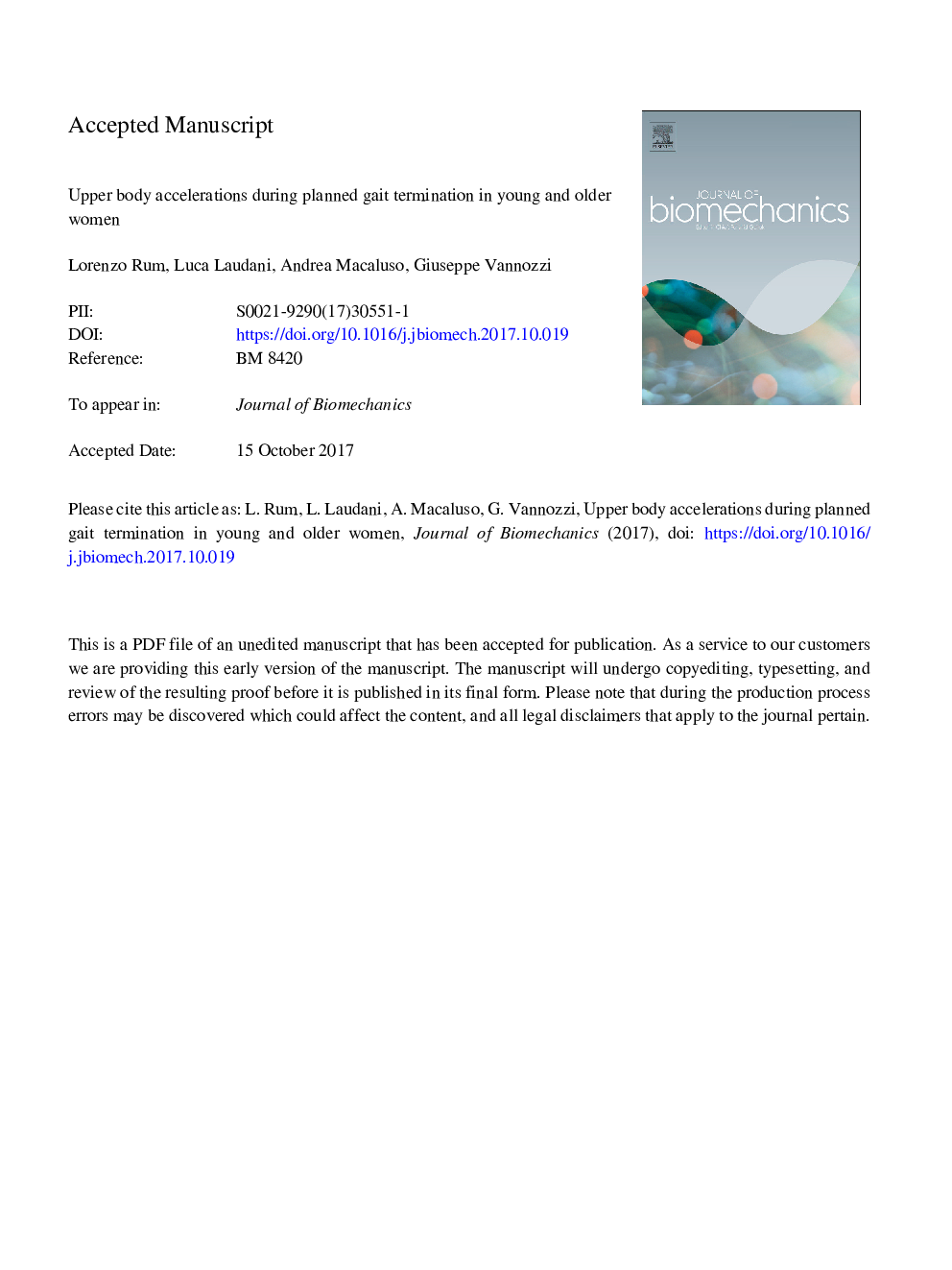| Article ID | Journal | Published Year | Pages | File Type |
|---|---|---|---|---|
| 7237035 | Journal of Biomechanics | 2017 | 21 Pages |
Abstract
Transitory tasks, such as gait termination, involve interactions between neural and biomechanical factors that challenge postural stability and head stabilization patterns in older adults. The aim of the study was to compare upper body patterns of acceleration during planned gait termination at different speeds between young and older women. Ten young and 10 older women were asked to carry out three gait termination trials at slow, comfortable and fast speed. A stereophotogrammetric system and a 15-body segments model were used to calculate antero-posterior whole-body Center of Mass (AP CoM) speed and to reconstruct the centroids of head, trunk and pelvis segments. RMS of three-dimensional linear accelerations were calculated for each segment and the transmission of acceleration between two segments was expressed as a percentage difference. Older women reported lower AP CoM speed and acceleration RMS of the three upper body segments than young women across the three speed conditions. A lower pelvis-to-trunk attenuation of accelerations in the transverse plane was observed in older compared to young women, and mainly in the medio-lateral direction. As possible explanations, older women may not need to reduce acceleration as young women because of their lower progression speed and the subsequent acceleration at upper body levels. On the other hand, older women may prioritize a decrease in the whole body progression speed at expense of the involvement of upper body segments. This limits the attenuation of the accelerations, particularly in the transverse plane, implying an increased dynamic unbalance in performing this transitory task.
Related Topics
Physical Sciences and Engineering
Engineering
Biomedical Engineering
Authors
Lorenzo Rum, Luca Laudani, Andrea Macaluso, Giuseppe Vannozzi,
